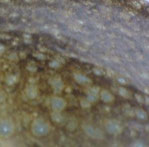my pottery
My work is stoneware or porcelain pottery, thrown on the wheel with the hope that it will be enjoyed in the kitchen and at the table. I prefer the elegance of simple shapes, but I have a background in drawing and printmaking, so I love to play with detailed surface design, including designing and cutting my own stamps and painting elaborate surfaces by hand. All of my work that is meant for eating, drinking, and serving food is fired in either a gas or a wood-fired kiln to at least 2350 degrees Fahrenheit and is food-safe, microwave-safe, and dishwasher-safe. You are welcome to put my tableware in the dishwasher (I do), but pottery will last longest when hand-washed.
Please read up on my ordering & shipping policies if you are interested in placing an order. For those who care to see a larger sampling of the pots I've made, check out my flickr gallery. You're also welcome to read my bio or a more formal C.V. Thank you very much for your interest in my work!
wood- and salt-fired pots

The wood-fired kiln that I help fire (along with a crew of about 18 people!) twice a year has three chambers and is 450 cubic feet in size. It fits more than 1500 pots. We fire it for
four days straight, in shifts around the clock; the firing consumes 5-6 cords of wood; and the kiln reaches -- and is kept at -- temperatures of upwards of 2350 degrees
Fahrenheit. It is labor-intensive compared to other types of firing, can produce beautiful, unrepeatable results, and, for folks who love the process, is a lot of fun.

In the third chamber of the kiln, the "salt chamber," we put pounds of table salt once it has reached a certain temperature. The salt that we add to that kiln chamber -- the very same sodium chloride you use in your kitchen -- bonds with the silica in the clay of the pots and vitrifies the surface, sometimes giving previously-unglazed clay a beautiful orange-peel-like texture that is a characteristic of salt-firing.

Another hallmark of woodfiring is the marks on the pots left by “wadding.” Wads of refractory material are used in stacking a wood kiln, & their purpose is to keep pots from becoming
fused to one another or the kiln shelves. A mark is sometimes left on the pot where the fire flows around a wad, leaving the clay beneath it untouched.






